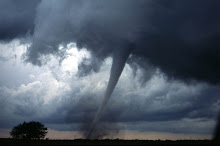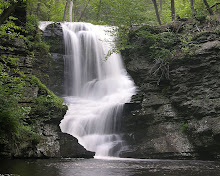
Again thanx to www.wikipedia.org for this remarkable article on Mars..
Geology
Main article: Geology of Mars
Based on orbital observations and the examination of the Martian meteorite collection, the surface of Mars appears to be composed primarily of basalt. Some evidence suggests that a portion of the Martian surface is more silica-rich than typical basalt, and may be similar to andesitic stones on Earth; however, these observations may also be explained by silica glass. Much of the surface is deeply covered by a fine iron(III) oxide dust that has the consistency of talcum powder.[7]
Rock strewn surface imaged by Mars Pathfinder
Rock strewn surface imaged by Mars Pathfinder
Although Mars has no intrinsic magnetic field, observations show that parts of the planet's crust have been magnetized and that alternating polarity reversals of its dipole field have occurred. This paleomagnetism of magnetically-susceptible minerals has properties that are very similar to the alternating bands found on the ocean floors of Earth. One theory, published in 1999 and re-examined in October 2005 (with the help of the Mars Global Surveyor), is that these bands demonstrate plate tectonics on Mars 4 billion years ago, before the planetary dynamo ceased to function (and, thus, the magnetic field).[8]
Current models of the planet's interior imply a core region approximately 1,480 kilometres (920 mi) in radius, consisting primarily of iron with about 15–17% sulfur. This iron sulfide core is partially fluid, and has twice the concentration of the lighter elements than exist at Earth's core. The core is surrounded by a silicate mantle that formed many of the tectonic and volcanic features on the planet, but now appears to be inactive. The average thickness of the planet's crust is about 50 km (31 mi), with a maximum thickness of 125 km (78 mi).[9] Earth's crust, averaging 40 km (25 mi), is only a third as thick as Mars’ crust relative to the sizes of the two planets.
The geological history of Mars can be split into many epochs, but the following are the three main ones:
* Noachian epoch (named after Noachis Terra): Formation of the oldest extant surfaces of Mars, 3.8 billion years ago to 3.5 billion years ago. Noachian age surfaces are scarred by many large impact craters. The Tharsis bulge volcanic upland is thought to have formed during this period, with extensive flooding by liquid water late in the epoch.
* Hesperian epoch (named after Hesperia Planum): 3.5 billion years ago to 1.8 billion years ago. The Hesperian epoch is marked by the formation of extensive lava plains.
* Amazonian epoch (named after Amazonis Planitia): 1.8 billion years ago to present. Amazonian regions have few meteorite impact craters but are otherwise quite varied. Olympus Mons formed during this period along with lava flows elsewhere on Mars.





No comments:
Post a Comment